
Prof Chris Turney
16.07.2014 | 11:00amAlthough often overlooked in the popular press, the Australian Antarctic explorer Douglas Mawson is one of the great heroes of Antarctic science. Raising an equivalent of $25 million from public and private benefactors, Mawson led what was then the largest, most multidisciplinary team to head south.
The Australasian expedition was of a scale never previously attempted: three bases, thirty-one land-based members, seven major sledging journeys and a full oceanographic program. Mawson’s venture gave the world its first complete scientific snapshot of a new continent.
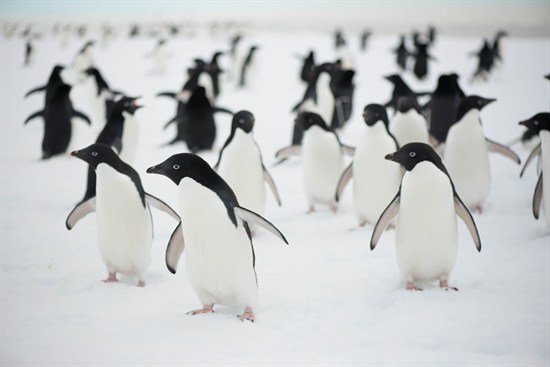
Setting up his main base at Cape Denison – which they soon discovered to be the windiest place in the world – his men explored a vast stretch of eastern Antarctica. The resulting 89 scientific volumes described Antarctica’s violent and extreme weather, its flourishing plant and animal life, the ocean’s fickleness. A more detailed description of the expedition is available here.
The East Antarctic remains to this day one of the last great wildernesses on our planet, and Mawson and his men were working in a region we now recognise as one of the key locations for understanding how our planet works.
Thanks to the efforts of the original Australasian Antarctic Expedition we now know the vast continental ice sheet acts as a thermostat for the regulation of our planet’s temperature, while the surrounding South Ocean plays a key role in shuffling heat around the globe.
The problem is this that all seems to be changing. In 2010, an iceberg the size of Rhode Island, known as B09B, dramatically knocked a 60 mile long tongue of ice off the Mertz Glacier into the Southern Ocean, setting off a cascade of change across the region, including locking Cape Denison up behind a vast expanse of sea ice.
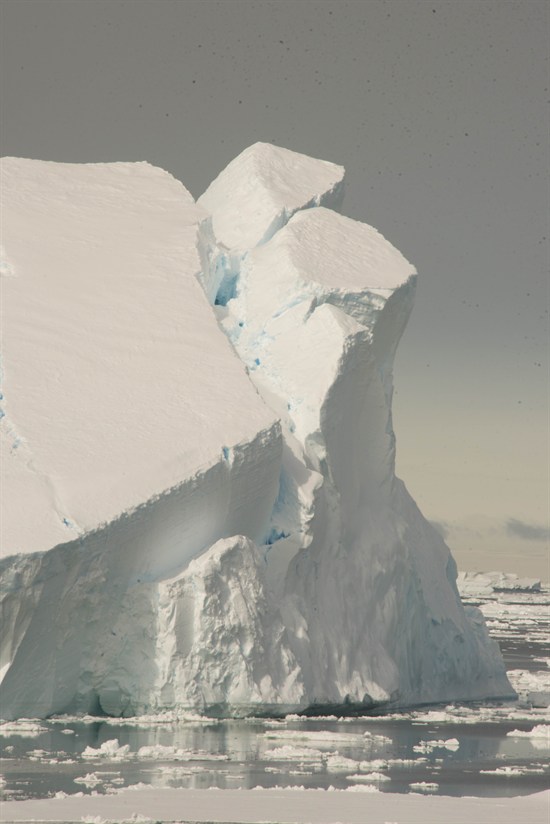
Thanks to the hard work undertaken a century ago, we have a baseline against which we can make and compare observations today. Unfortunately, no government Antarctic program was planning to visit the area to make sense of what was happening. What impact was there on ocean circulation? What effect was this having on the climate and ice sheet? How is local wildlife responding?
To make the measurements needed, Dr Chris Fogwill and I resolved to head south. Against a backdrop of falling investment in science in Western countries, we found funding from a wide range of sources, just as Mawson did. And after two years of preparation we had a large, ice-breaker- the MV Akademik Shokalskiy – and a brilliant team.
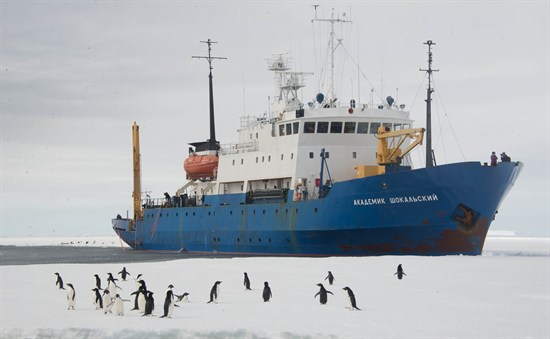
We set out in late November 2013 and first worked our way across the wildlife havens of the sub-Antarctic islands. Although free of ice today, the islands preserve a remarkable record of past glacial activity.
Glaciological reconstructions on the land and at sea are helping us understand how our planet moved out of the last ice age. Alongside these efforts, analysis of the wildlife, trees and peat bogs are providing an invaluable record of climate change and its impact across this vast region.
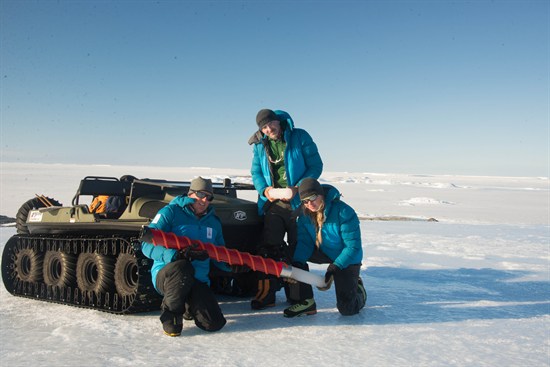
Fighting our way across the ‘Roaring Forties’ and ‘Furious Fifties’ wind belt of the Southern Ocean, we deployed ocean drifters and automated probes to to investigate one of the planet’s great ocean boundaries: the Antarctic Convergence, the division between the warm subtropical waters and the frigid cold polar waters.
Many of these devices are continuing to collect data and will do so for the next three to five years, beaming their findings back home. You can visit the US Scripps Institute of Oceanography website to see what our probes are discovering (check out numbers 8183-6, 8189 and 8190).
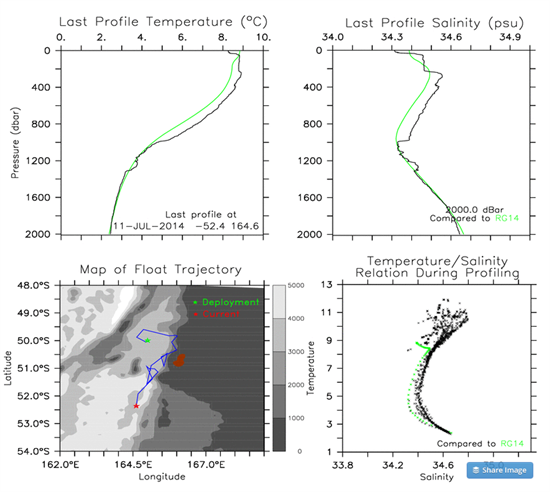
Readings from float 8183
With 24-hour daylight the norm, we made the first ever use of tracked vehicles in the Antarctic to successfully cross 40-miles of three-feet-thick sea ice. After five hours of heart-stopping travel through an iceberg graveyard, we reached Mawson’s Huts at 67Ë?S – a time capsule from the Edwardian age.
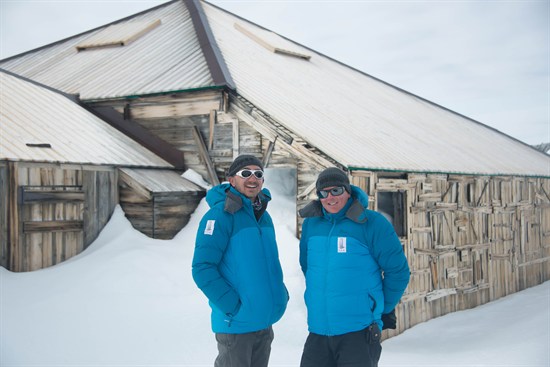
Passing convoys of penguins along the way, we broadcast our progress in real time and delivered two science teams and conservators from the Mawson’s Huts Foundation. Oceanographic, biological and glaciological work on and around Cape Denison is providing invaluable insights into past, present and future changes in the region. Our work largely completed, we set out for home but became trapped for 10 days by a major outbreak of sea ice, remobilised from along the Antarctic coast.
Inspired by the great explorers and the events surrounding 1912, the Australasian Antarctic Expedition 2013-2014 aimed to excite the public about science. We took satellite technology to broadcast science and our findings – and our predicament during those days trapped by the ice – to the world.
Speaking at the Royal Institution tomorrow night, (17 July), I’ll be focusing on the scientific results from the Australasian Antarctic Expedition 2013-2014 and the importance of engaging the public in how science works and why it matters. As the astronomer Carl Sagan once wrote:
“If we teach only the findings and products of science – no matter how useful and inspiring they may be – without communicating its critical method, how can the average person possibly distinguish science from pseudoscience?”
Return to the home of the blizzard: Thursday 17 July, 7.00pm to 8.30pm
Professor of Climate Change Chris Turney will present the initial findings of the Australasian Antarctic Expedition 2013-2014. The event will be chaired by science journalist Alok Jha. Book here
Chris Turney is an Australian Research Council Laureate Fellow, Professor of Earth Sciences and Climate Change at the University of New South Wales. Visit www.spiritofmawson.com to learn more about the expedition. All blog photos courtesy of Chris Turney

